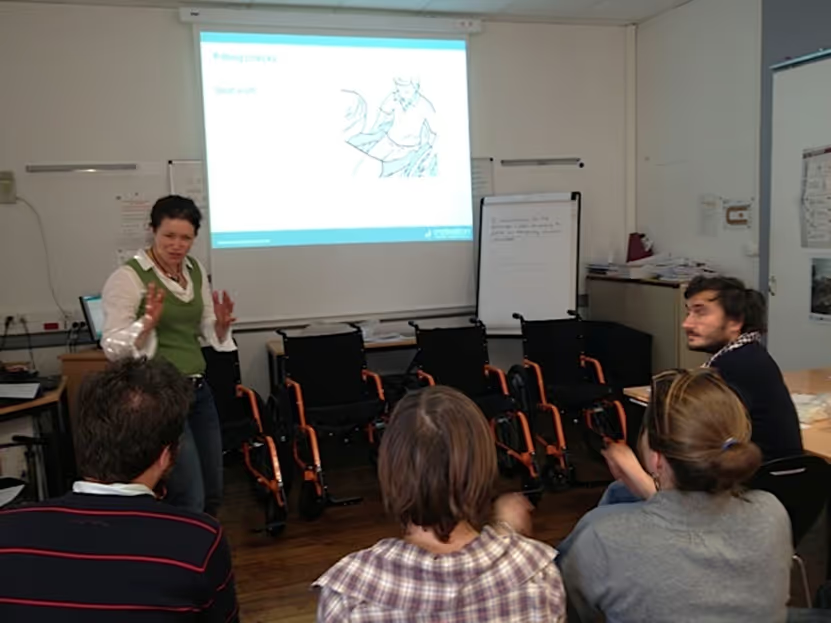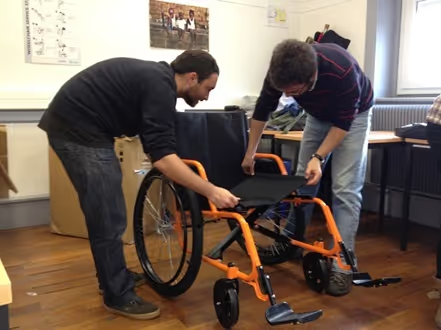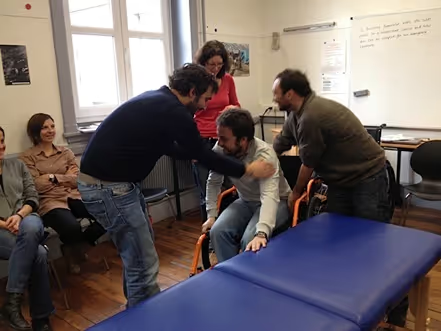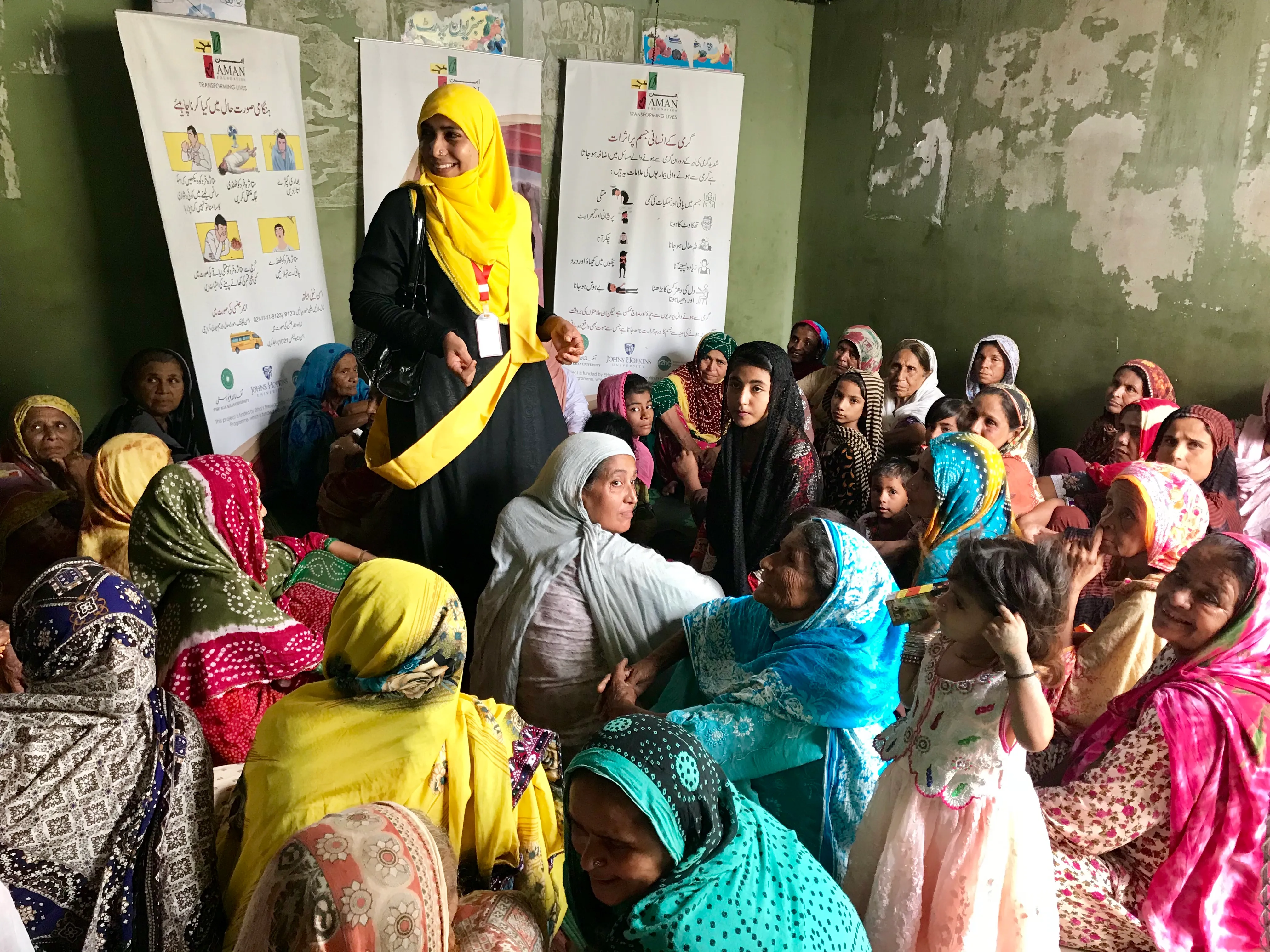Training in basic principles… and quickly please!

Even though it is intended for temporary use, it’s vital that the people who will be delivering emergency wheelchairs know how to fit the wheelchair properly to the user. So, one of the first activities for the implementation stage of the emergency response wheelchair project has been the development of a training course to set up and run an Emergency Response Wheelchair Service.

If a wheelchair is poorly fitted, wheelchair users can develop problems like scoliosis or pressure sores. These can be fatal if left untreated. The majority of people who sustain spinal injuries in developing countries die within two years from preventable complications – we want to give service providers the basic knowledge to help to stop this happening in the confusion of an emergency situation.
Under pressure, an emergency wheelchair service can only focus on the immediate mobility needs of wheelchair users and a very basic fitting. They will then follow these people up for an in-depth fitting with a permanent wheelchair once the emergency phase is passed.
A basic wheelchair service training course takes 40 hours to deliver. We have pared down our emergency response course to just six. The course covers how to assemble the emergency wheelchair, how to assess, prescribe and fit the wheelchair and how to teach basic wheelchair skills to the users.
It’s been a real challenge to cut down the accepted basic wheelchair service to something that would work in an emergency context. But by recognising the pressures emergency responders are under and what is realistic to expect of them, we can make sure the absolute fundamental principals in wheelchair provision are always considered - even in an emergency.
Having finalised the training course, last week my colleague Sarah and I travelled to Lyon, France to visit our partner, Handicap International, and deliver it to five of their staff. The course was a Training of Trainers, which means Handicap International staff are equipped to deliver it themselves when and where it’s needed. Feedback on the content was positive, but our delivery was slower than we’d hoped, so we need to find a way to get the key principles across faster. We will need to cut the training down further to make sure it can be delivered within one day.


It was great to be able to see the wheelchairs being assembled quickly by the participants, and watch them work through the emergency fitting form. We also had some thought provoking discussions about in which circumstances the emergency wheelchair would be deployed. The trained staff at Handicap International are now equipped to train their own emergency responders.
We have taken all the feedback from the course away with us and will be revising and fine tuning it ready to deliver to our other partner, Johanniter International Assistance, next month.
Sarah Sheldon - Programme Coordinator, Motivation
Stay updated
Sign up for our newsletter to receive regular updates on resources, news, and insights like this. Don’t miss out on important information that can help you stay informed and engaged.
Related articles



Explore Elrha
Learn more about our mission, the organisations we support, and the resources we provide to drive research and innovation in humanitarian response.